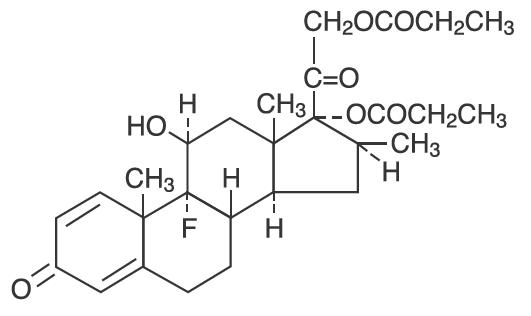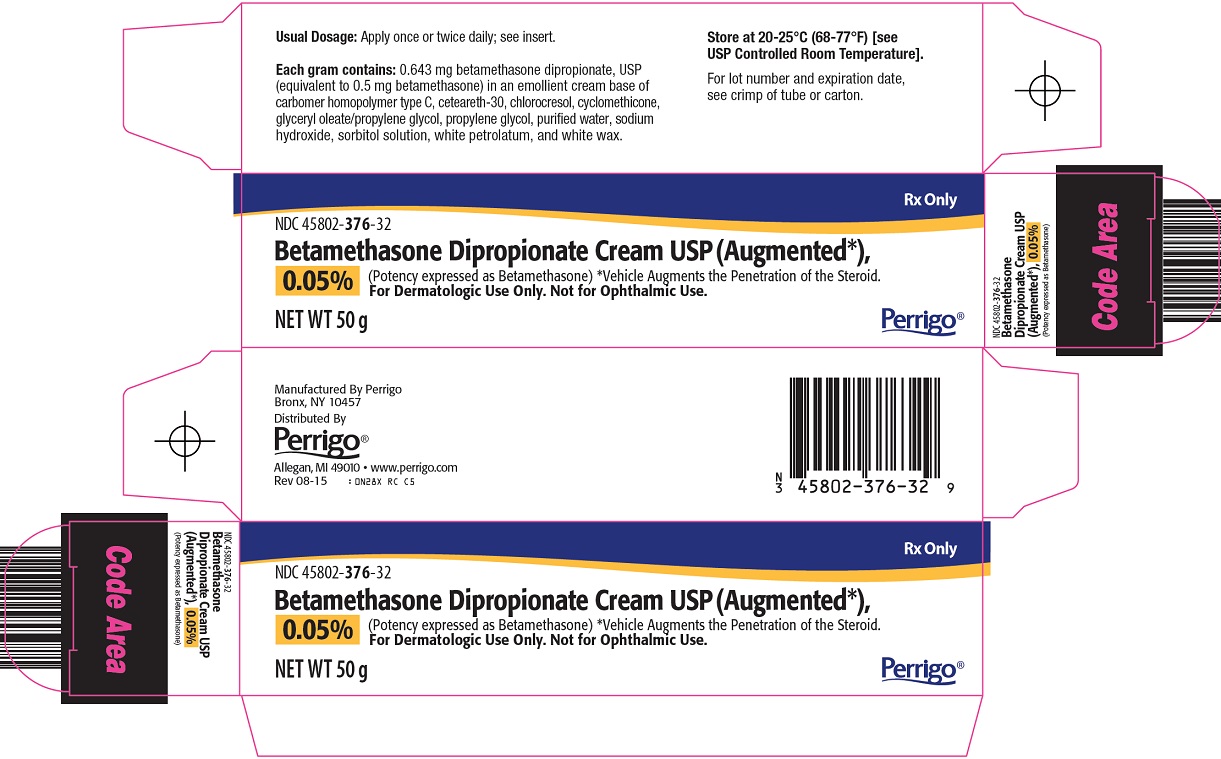RRB PAK- betamethasone dipropionate cream and ross ru skin discontinuities
Alvix Laboratories, LLC
Disclaimer: This drug has not been found by FDA to be safe and effective, and this labeling has not been approved by FDA. For further information about unapproved drugs, click here.
----------
RRB Pak Kit
Betamethasone Dipropionate Cream USP, 0.05%
Ross Ru Skin Discontinuities
For Pharmacy Prescription Compounding Only / Rx Only
For Topical Use Only
KIT CONTAINS
Betamethasone Dipropionate Cream USP 0.05%:
(Potency expressed as Betamethasone)
Betamethasone Dipropionate Cream (Augmented), 0.05% contains betamethasone dipropionate, USP, a synthetic adrenocorticosteroid, for dermatologic use in an emollient base. Betamethasone, an analog of prednisolone, has a high degree of corticosteroid activity and a slight degree of mineralocorticoid activity. Betamethasone dipropionate is the 17,21-dipropionate ester of betamethasone. Vehicle augments the penetration of the steroid.
Ross Ru SD® Wound Care Hydrogel:
is an over-the-counter, FDA-approved anti-microbial hydrogel for topical management of minor cuts, lacerations, abrasions, first and second degree burns, and skin irritations. It is alcohol-free, steroid-free, does not sting, and can be applied as needed with or without a bandage. Ross Ru dries quickly and invisibly leaving no oily residues. Unlike most topical anti-microbial products, none of Ross Ru SD’s ingredients are believed to cause any allergic reaction.
For Pharmacy Prescription Copmounding Only / Rx Only
For Dermatologic Use Only - Not for Ophthalmic Use
DESCRIPTION
Betamethasone Dipropionate Cream (Augmented), 0.05%:
Contains betamethasone dipropionate, USP, a synthetic adrenocorticosteroid, for dermatologic use in an emollient base. Betamethasone, an analog of prednisolone, has a high degree of corticosteroid activity and a slight degree of mineralocorticoid activity. Betamethasone dipropionate is the 17,21-dipropionate ester of betamethasone.
Chemically, betamethasone dipropionate is 9-fluoro-11β,17,21-trihydroxy- 16β-methylpregna-1,4-diene-3,20-dione 17,21-dipropionate, with the empirical formula C 28H 37FO 7, a molecular weight of 504.6, and the following structural formula:

Betamethasone dipropionate is a white to creamy white, odorless crystalline powder, insoluble in water.
Each gram of Betamethasone Dipropionate Cream (Augmented), 0.05% contains 0.643 mg betamethasone dipropionate, USP (equivalent to 0.5 mg betamethasone) in an emollient cream base of carbomer homopolymer type C, ceteareth-30, chlorocresol, cyclomethicone, glyceryl oleate/propylene glycol, propylene glycol, purified water, sodium hydroxide, sorbitol solution, white petrolatum, and white wax.
Ross Ru SD® Wound Care Hydrogel:
May be used for managing partial and full thickness wounds, pressure related ulcerations, diabetic related ulcerations, surgical wounds and virtually all types of lacerations, abrasions, and first aid applications including 1st and 2nd degree burns. Ross Ru SD® is for external use only and can be used on any part of the body except for oral or ophthalmic use.
CLINICAL PHARMACOLOGY
Betamethasone Dipropionate Cream USP 0.05%:
The corticosteroids are a class of compounds comprising steroid hormones secreted by the adrenal cortex and their synthetic analogs. In pharmacologic doses, corticosteroids are used primarily for their anti-inflammatory and/or immunosuppressive effects.
Topical corticosteroids, such as betamethasone dipropionate, are effective in the treatment of corticosteroid-responsive dermatoses primarily because of their anti-inflammatory, anti-pruritic, and vasoconstrictive actions. However, while the physiologic, pharmacologic, and clinical effects of the corticosteroids are well known, the exact mechanisms of their actions in each disease are uncertain. Betamethasone dipropionate, a corticosteroid, has been shown to have topical (dermatologic) and systemic pharmacologic and metabolic effects characteristic of this class of drugs.
Ross Ru SD® Wound Care Hydrogel:
Uses proprietary silver nano-particle technology to ensure maximum anti-microbial effect from small quantities of silver. The silver is in elemental form, and not mixed with alginates or sulfa compounds that can cause allergies. This hydrogel follows all guidelines of the World Health Organization and U.S. Centers for Disease Control on managing clean wounds.
Pharmacokinetics
Betamethasone Dipropionate Cream USP 0.05%:
The extent of percutaneous absorption of topical corticosteroids is determined by many factors including the vehicle, the integrity of the epidermal barrier, and the use of occlusive dressings (see DOSAGE AND ADMINISTRATION).
Topical corticosteroids can be absorbed through normal intact skin. Inflammation and/or other disease processes in the skin may increase percutaneous absorption. Occlusive dressings substantially increase the percutaneous absorption of topical corticosteroids (see DOSAGE AND ADMINISTRATION).
Once absorbed through the skin, topical corticosteroids enter pharmacokinetic pathways similar to systemically administered corticosteroids. Corticosteroids are bound to plasma proteins in varying degrees, are metabolized primarily in the liver, and excreted by the kidneys. Some of the topical corticosteroids and their metabolites are also excreted into the bile.
Betamethasone dipropionate cream (augmented), 0.05% was applied once daily at 7 grams per day for 1 week to diseased skin, in adult patients with psoriasis or atopic dermatitis, to study its effects on the hypothalamic-pituitary-adrenal (HPA) axis. The results suggested that the drug caused a slight lowering of adrenal corticosteroid secretion, although in no case did plasma cortisol levels go below the lower limit of the normal range.
Sixty-seven pediatric patients ages 1 to 12 years, with atopic dermatitis, were enrolled in an open-label, hypothalamic-pituitary-adrenal (HPA) axis safety study. Betamethasone dipropionate cream (augmented), 0.05% was applied twice daily for 2 to 3 weeks over a mean body surface area of 58% (range 35% to 95%). In 19 of 60 (32%) evaluable patients, adrenal suppression was indicated by either a <5 mcg/dL pre-stimulation cortisol, or a cosyntropin post-stimulation cortisol <18 mcg/dL and/or an increase of < 7 mcg/dL from the baseline cortisol. Studies performed with betamethasone dipropionate cream (augmented), 0.05% indicate that it is in the high range of potency as compared with other topical corticosteroids.
INDICATIONS AND USAGE
Betamethasone Dipropionate Cream USP 0.05%:
Betamethasone Dipropionate Cream (Augmented), 0.05% is a high-potency corticosteroid indicated for relief of the inflammatory and pruritic manifestations of corticosteroid-responsive dermatoses in patients 13 years and older.
CONTRAINDICATIONS
Betamethasone Dipropionate Cream USP 0.05%:
Betamethasone Dipropionate Cream (Augmented), 0.05% is contraindicated in patients who are hypersensitive to betamethasone dipropionate, to other corticosteroids, or to any ingredient in this preparation.
PRECAUTIONS
General
Betamethasone Dipropionae Cream USP 0.05%:
Systemic absorption of topical corticosteroids has produced reversible HPA axis suppression, manifestations of Cushing's syndrome, hyperglycemia, and glucosuria in some patients.
Conditions which augment systemic absorption include the application of the more potent corticosteroids, use over large surface areas, prolonged use, and the addition of occlusive dressings. Use of more than one corticosteroid-containing product at the same time may increase total systemic glucocorticoid exposure (see DOSAGE AND ADMINISTRATION).
Therefore, patients receiving a large dose of a potent topical steroid applied to a large surface area should be evaluated periodically for evidence of HPA axis suppression by using the urinary free cortisol and ACTH stimulation tests. If HPA axis suppression is noted, an attempt should be made to withdraw the drug, to reduce the frequency of application, or to substitute a less potent steroid.
Recovery of HPA axis function is generally prompt and complete upon discontinuation of the drug. In an open-label pediatric study of 60 evaluable patients, of the 19 who showed evidence of suppression, 4 patients were tested 2 weeks after discontinuation of betamethasone dipropionate cream (augmented), 0.05%, and 3 of the 4 (75%) had complete recovery of HPA axis function. Infrequently, signs and symptoms of steroid withdrawal may occur, requiring supplemental systemic corticosteroids.
Children may absorb proportionally larger amounts of topical corticosteroids and thus be more susceptible to systemic toxicity (see PRECAUTIONS: Pediatric Use).
If irritation develops, topical corticosteroids should be discontinued and appropriate therapy instituted.
In the presence of dermatological infections, the use of an appropriate antifungal or antibacterial agent should be instituted. If a favorable response does not occur promptly, the corticosteroid should be discontinued until the infection has been adequately controlled.
Ross Ru SD® Wound Care Hydrogel:
1. Consult with a heath care professional if you have any concerns or questions about the wound.
2. Always be alert for signs of wound infection or worsening conditions. These can include:
- Pus or cloudy fluid draining from the wound
- Increased redness around the wound
- Wound has become extremely tender
- Increased pain or swelling 48 hours after the wound occurred
- Onset of fever
3. If wound has not healed within 10 days from the date of the treatment please consult a health care professional. Do not use beyond the recommended 10-day treatment period.
4. The Gel is designed for use on any part of the body except for oral and ophthalmic use. Do not use the gel in any other manner.
Information for Patients
Betamethasone Dipropionate Cream USP 0.05%:
Patients using topical corticosteroids should receive the following information and instructions. This information is intended to aid in the safe and effective use of this medication. It is not a disclosure of all possible adverse or intended effects.
1. This medication is to be used as directed by the physician and should not be used longer than the prescribed time period. It is for external use only. Avoid contact with the eyes.
2. Patients should be advised not to use this medication for any disorder other than that for which it was prescribed.
3. The treated skin area should not be bandaged or otherwise covered or wrapped as to be occlusive (see DOSAGE AND ADMINISTRATION).
4. Patients should report any signs of local adverse reactions.
5. Other corticosteroid-containing products should not be used with Betamethasone Dipropionate Cream (Augmented), 0.05% without first talking to your physician.
Laboratory Tests
Betamethasone Dipropionate Cream USP 0.05%:
The following tests may be helpful in evaluating HPA axis suppression:
Urinary free cortisol test
ACTH stimulation test
Carcinogenesis, Mutagenesis, Impairment of Fertility
Betamethasone Dipropionate Cream USP 0.05%:
Long-term animal studies have not been performed to evaluate the carcinogenic potential of betamethasone dipropionate.
Betamethasone was negative in the bacterial mutagenicity assay ( Salmonella typhimurium and Escherichia coli), and in the mammalian cell mutagenicity assay (CHO/HGPRT). It was positive in the in vitro human lymphocyte chromosome aberration assay, and equivocal in the in vivo mouse bone marrow micronucleus assay. This pattern of response is similar to that of dexamethasone and hydrocortisone.
Reproductive studies with betamethasone dipropionate carried out in rabbits at doses of 1.0 mg/kg by the intramuscular route and in mice up to 33 mg/kg by the intramuscular route indicated no impairment of fertility except for dose-related increases in fetal resorption rates in both species. These doses are approximately 5- and 38-fold the human dose based on a mg/m 2 comparison, respectively.
Pregnancy
Teratogenic Effects
Pregnancy Category C
Betamethasone Dipropionate Cream USP 0.05%:
Corticosteroids are generally teratogenic in laboratory animals when administered systemically at relatively low dosage levels.
Betamethasone dipropionate has been shown to be teratogenic in rabbits when given by the intramuscular route at doses of 0.05 mg/kg. This dose is approximately 0.2-fold the maximum human dose based on a mg/m 2 comparison. The abnormalities observed included umbilical hernias, cephalocele and cleft palates.
Some corticosteroids have been shown to be teratogenic after dermal application in laboratory animals. There are no adequate and well-controlled studies in pregnant women on teratogenic effects from topically applied corticosteroids. Therefore, topical corticosteroids should be used during pregnancy only if the potential benefit justifies the potential risk to the fetus. Drugs of this class should not be used extensively on pregnant patients, in large amounts, or for prolonged periods of time.
Nursing Mothers
Betamethasone Dipropionate Cream USP 0.05%:
It is not known whether topical administration of corticosteroids can result in sufficient systemic absorption to produce detectable quantities in breast milk. Systemically administered corticosteroids are secreted into breast milk in quantities not likely to have a deleterious effect on the infant. Nevertheless, a decision should be made whether to discontinue nursing or to discontinue the drug, taking into account the importance of the drug to the mother.
Pediatric Use
Betamethasone Dipropionate Cream USP 0.05%:
Use of Betamethasone Dipropionate Cream (Augmented), 0.05% in pediatric patients 12 years of age and younger is not recommended (see CLINICAL PHARMACOLOGY and ADVERSE REACTIONS). In an open-label study, 19 of 60 (32%) evaluable pediatric patients (aged 3 months-12 years old) using betamethasone dipropionate cream (augmented), 0.05% for treatment of atopic dermatitis demonstrated HPA axis suppression. The proportion of patients with adrenal suppression in this study was progressively greater, the younger the age group (see CLINICAL PHARMACOLOGY - Pharmacokinetics).
Pediatric patients may demonstrate greater susceptibility to topical corticosteroid-induced HPA axis suppression and Cushing’s syndrome than mature patients because of a larger skin surface area to body weight ratio. The study described above supports this premise, as adrenal suppression in 9-12 year olds, 6-8 year olds, 2-5 year olds, and 3 months-1 year old was 17%, 32%, 38% and 50%, respectively.
Hypothalamic-pituitary-adrenal (HPA) axis suppression, Cushing's syndrome, and intracranial hypertension have been reported in children receiving topical corticosteroids. Manifestations of adrenal suppression in children include linear growth retardation, delayed weight gain, low plasma cortisol levels, and absence of response to ACTH stimulation. Manifestations of intracranial hypertension include bulging fontanelles, headaches, and bilateral papilledema. Chronic corticosteroid therapy may interfere with the growth and development of children.
Geriatric Use
Betamethasone Dipropionate Cream USP 0.05%:
Clinical studies of betamethasone dipropionate cream (augmented), 0.05% included 104 subjects who were 65 years of age and over and 8 subjects who were 75 years of age and over. No overall differences in safety or effectiveness were observed between these subjects and younger subjects, and other reported clinical experience has not identified differences in responses between the elderly and younger patients. However, greater sensitivity of some older individuals cannot be ruled out.
ADVERSE REACTIONS
Betamethasone Dipropionate Cream USP 0.05%:
The only local adverse reaction reported to be possibly or probably related to treatment with betamethasone dipropionate cream (augmented), 0.05% during adult controlled clinical studies was stinging. It occurred in 1 patient, 0.4%, of the 242 patients or subjects involved in the studies.
Adverse reactions reported to be possibly or probably related to treatment with betamethasone dipropionate cream (augmented), 0.05% during a pediatric clinical study include signs of skin atrophy (telangiectasia, bruising, shininess). Skin atrophy occurred in 7 of 67 (10%) patients, involving all age groups from 3 months-12 years of age.
The following local adverse reactions are reported infrequently when topical corticosteroids are used as recommended. These reactions are listed in an approximate decreasing order of occurrence: burning, itching, irritation, dryness, folliculitis, hypertrichosis, acneiform eruptions, hypopigmentation, perioral dermatitis, allergic contact dermatitis, maceration of the skin, secondary infection, skin atrophy, striae, and miliaria.
Systemic absorption of topical corticosteroids has produced reversible hypothalamic-pituitary-adrenal (HPA) axis suppression, manifestations of Cushing's syndrome, hyperglycemia, and glucosuria in some patients.
OVERDOSAGE
Betamethasone Dipropionate Cream USP 0.05%:
Topically applied corticosteroids can be absorbed in sufficient amounts to produce systemic effects (see PRECAUTIONS).
DOSAGE AND ADMINISTRATION
Betamethasone Dipropionate Cream USP 0.05%:
Apply a thin film of Betamethasone Dipropionate Cream (Augmented), 0.05% to the affected skin areas once or twice daily. Treatment with Betamethasone Dipropionate Cream (Augmented), 0.05% should be limited to 45 g per week.
Betamethasone Dipropionate Cream (Augmented), 0.05% is not to be used with occlusive dressings.
HOW SUPPLIED
Betamethasone Dipropionate Cream (Augmented), 0.05% is available as follows:
50 g tube (NDC 45802- 376-32)
Ross Ru SD® Wound Care Hydrogel:
45 mL squeezable tube, with screw-top flip-cap.
Betamethasone Dipropionate Cream USP 0.05%:
Manufactured by Perrigo
Bronx, NY 10457
Ross Ru SD® Wound Care Hydrogel:
Manufactured by Bio-TD
CONDOMINIO INDUSTRIAL SAN JOSE DE ULLOA #26
HEREDIA, COSTA RICA 40104
TEL +506 2293 3239
www.bio-td.com
info@bio-td.com
Packaged by:
Alvix Laboratories, LLC
6601 Sunplex Drive
Ocean Springs, MS 39564

KIT CONTENTS LABELS
Betamethasone Dipropionate Cream USP 0.05%:
Rx Only
NDC 45802- 376-32
Betamethasone Dipropionate Cream USP (Augmented*), 0.05%
(Potency expressed as Betamethasone) *Vehicle Augments the Penetration of the Steroid.
For Dermatologic Use Only. Not for Ophthalmic Use.
NET WT 50 g

Ross Ru SD® Wound Care Hydrogel:


| RRB PAK
betamethasone dipropionate cream and ross ru skin discontinuities kit |
||||||||||||||||||||||||
|
||||||||||||||||||||||||
|
||||||||||||||||||||||||
|
||||||||||||||||||||||||
|
||||||||||||||||||||||||
|
||||||||||||||||||||||||
|
||||||||||||||||||||||||
|
||||||||||||||||||||||||
|
||||||||||||||||||||||||
|
||||||||||||||||||||||||
|
||||||||||||||||||||||||
|
||||||||||||||||||||||||
|
||||||||||||||||||||||||
|
||||||||||||||||||||||||
|
||||||||||||||||||||||||
|
||||||||||||||||||||||||
|
||||||||||||||||||||||||
| Labeler - Alvix Laboratories, LLC (962445925) |
| Registrant - Alvix Laboratories, LLC (962445925) |
| Establishment | |||
| Name | Address | ID/FEI | Business Operations |
|---|---|---|---|
| Alvix Laboratories, LLC | 962445925 | manufacture(15455-9552) | |
